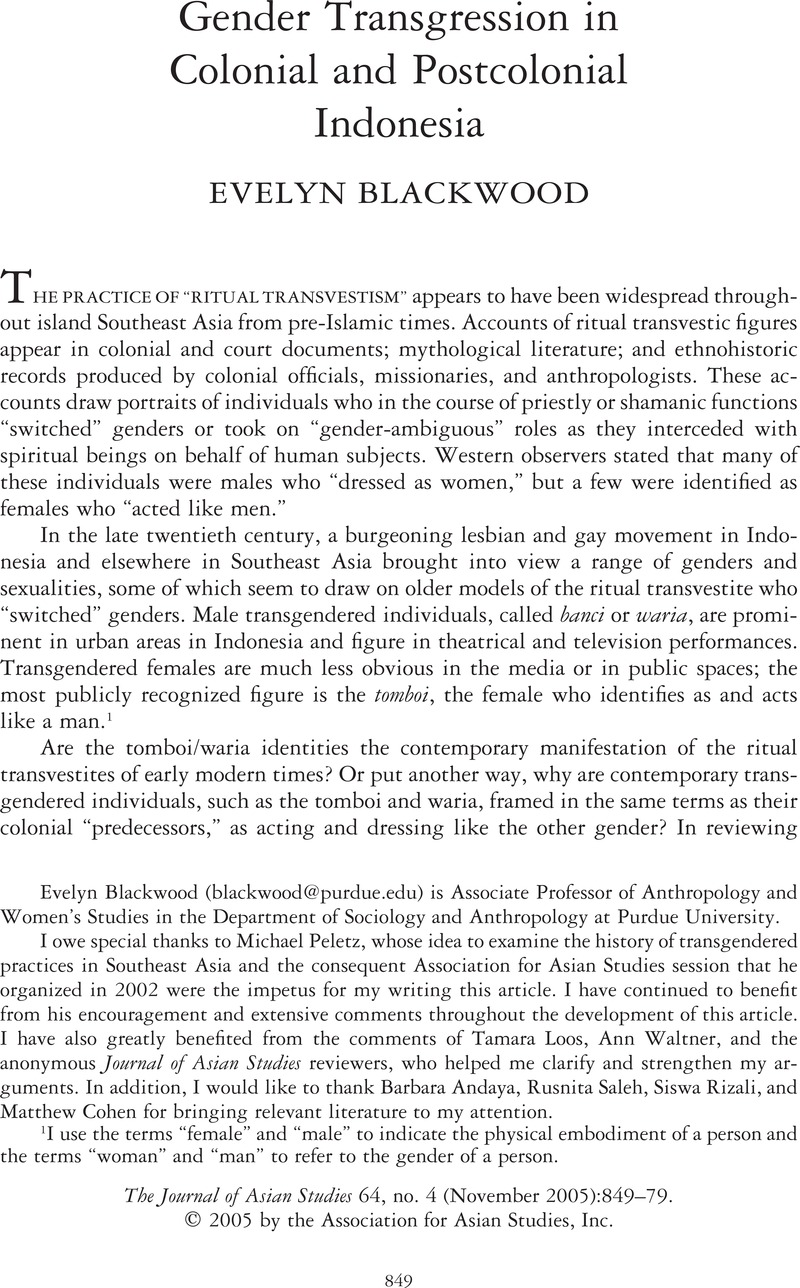Crossref Citations
This article has been cited by the following publications. This list is generated based on data provided by Crossref.
Blackwood, Evelyn
and
Wieringa, Saskia E.
2007.
Women’s Sexualities and Masculinities in a Globalizing Asia.
p.
1.
2007.
A Coincidence of Desires.
p.
161.
Boellstorff, Tom
2007.
Queer Studies in the House of Anthropology.
Annual Review of Anthropology,
Vol. 36,
Issue. 1,
p.
17.
2007.
A Coincidence of Desires.
p.
114.
2007.
A Coincidence of Desires.
p.
139.
2007.
A Coincidence of Desires.
p.
219.
2007.
A Coincidence of Desires.
p.
78.
2007.
A Coincidence of Desires.
p.
235.
2007.
A Coincidence of Desires.
p.
35.
2007.
A Coincidence of Desires.
p.
181.
Blackwood, Evelyn
2007.
Women’s Sexualities and Masculinities in a Globalizing Asia.
p.
181.
2007.
A Coincidence of Desires.
p.
1.
Hughes-Freeland, Felicia
2008.
Cross-Dressing Across Cultures: Genre and Gender in the Dances of Didik Nini Thowok.
SSRN Electronic Journal,
Wieringa, Saskia E.
2010.
Gender Variance in Asia.
Gender, Technology and Development,
Vol. 14,
Issue. 2,
p.
143.
Brown, Gavin
Browne, Kath
Elmhirst, Rebecca
and
Hutta, Simon
2010.
Sexualities in/of the Global South.
Geography Compass,
Vol. 4,
Issue. 10,
p.
1567.
Smith, Bonnie G.
2010.
Women’s History: A Retrospective from the United States.
Signs: Journal of Women in Culture and Society,
Vol. 35,
Issue. 3,
p.
723.
Elmhirst, Rebecca
2011.
Migrant pathways to resource access in Lampung’s political forest: Gender, citizenship and creative conjugality.
Geoforum,
Vol. 42,
Issue. 2,
p.
173.
Sunardi, Christina
2011.
Negotiating Authority and Articulating Gender: Performer Interaction in Malang, East Java.
Ethnomusicology,
Vol. 55,
Issue. 1,
p.
32.
Wieringa, Saskia
2012.
Passionate Aesthetics and Symbolic Subversion: Heteronormativity in India and Indonesia.
Asian Studies Review,
Vol. 36,
Issue. 4,
p.
515.
Sinnott, Megan
2012.
Korean-Pop,Tom Gay Kings,Les Queensand the Capitalist Transformation of Sex/Gender Categories in Thailand.
Asian Studies Review,
Vol. 36,
Issue. 4,
p.
453.



